Top 5 Fastest Missiles in the World for 2025: A Detailed Overview

In the swiftly evolving arena of military technology, speed plays a pivotal role in enhancing a missile's capacity to evade defenses, decreasing reaction time for opponents, and ensuring successful target engagement. By 2025, various nations have produced missiles reaching hypersonic speeds beyond Mach 5 (approximately 6,174 km/h), reshaping the landscape of modern warfare. This article offers a detailed analysis of the top five fastest missiles globally, highlighting their specifications, capabilities, and strategic importance, accompanied by a comparative table.
Missiles are classified by speed into subsonic (below Mach 1), supersonic (Mach 1 to Mach 5), and hypersonic (above Mach 5). Hypersonic missiles, in particular, are revolutionary due to their extreme speed and, occasionally, maneuverability, making them difficult to intercept.
These weapons are predominantly employed for strategic deterrence, often equipped with nuclear or conventional warheads, and are integral to the military strategies of countries such as Russia, China, and the United States. The following sections delve into the top five fastest missiles in 2025, ranked according to their maximum speed, based on credible defense sources.
Also Read: Top 10 Intercontinental Ballistic Missiles
Why Speed Matters for Missiles?
Missile speed is crucial for several reasons. Firstly, high velocities enhance a missile's capability to avoid enemy defenses, making interception exceedingly difficult. The quicker a missile, the less time adversaries have to respond, increasing the probability of successful target engagement.

Moreover, high speeds increase the missile's range and responsiveness, facilitating rapid deployment and engagement.
The List of the 5 Fastest Missiles in the World
The following are the 5 fastest missiles in the world:
1. Avangard: Revolutionizing Hypersonic Technology
Russia's Avangard missile is a groundbreaking advancement in hypersonic technology. Its remarkable speed and maneuverability enable it to reach up to Mach 27, or 32,200 kilometers per hour. What distinguishes Avangard is its rapid maneuvering capability, rendering interception nearly impossible. Its unmatched precision and range make it an imposing force in military operations.
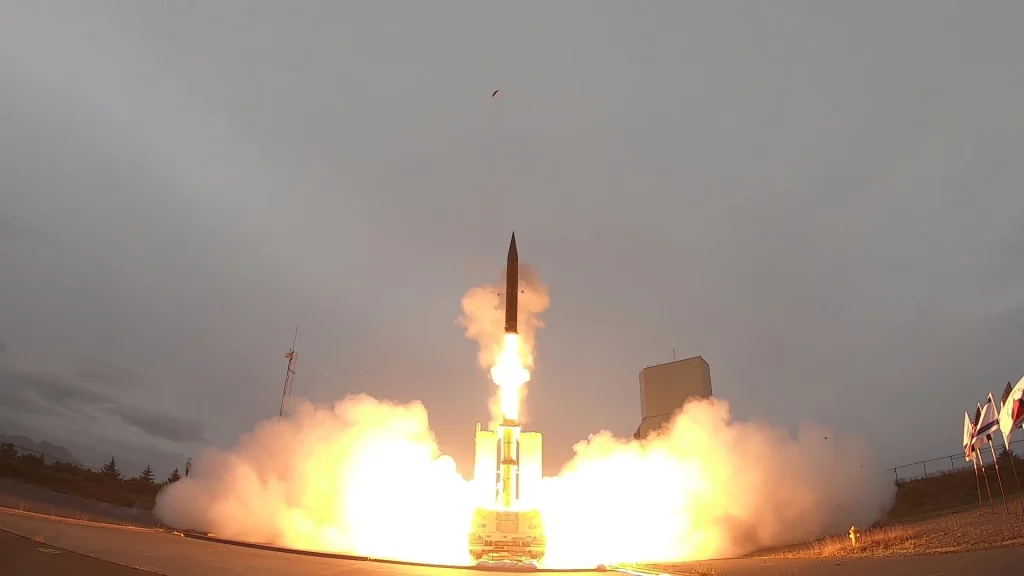
Key Features:
- Origin: Russia
- Class: Hypersonic Glide Vehicle (HGV)
- Range: >6000km
- Warhead: Nuclear 2MT option
- Status: In service
Also Read: 15 Best Aircraft Carriers in the World
2. DF-41: China's Swift Strategic Deterrent
China's Dongfeng-41 (DF-41) ballistic missile has garnered global attention among military experts. With a top speed of Mach 25, or around 30,600 kilometers per hour, the DF-41 stands out in China's military arsenal. Its extensive range and capacity to carry multiple warheads position it as a formidable strategic deterrent.
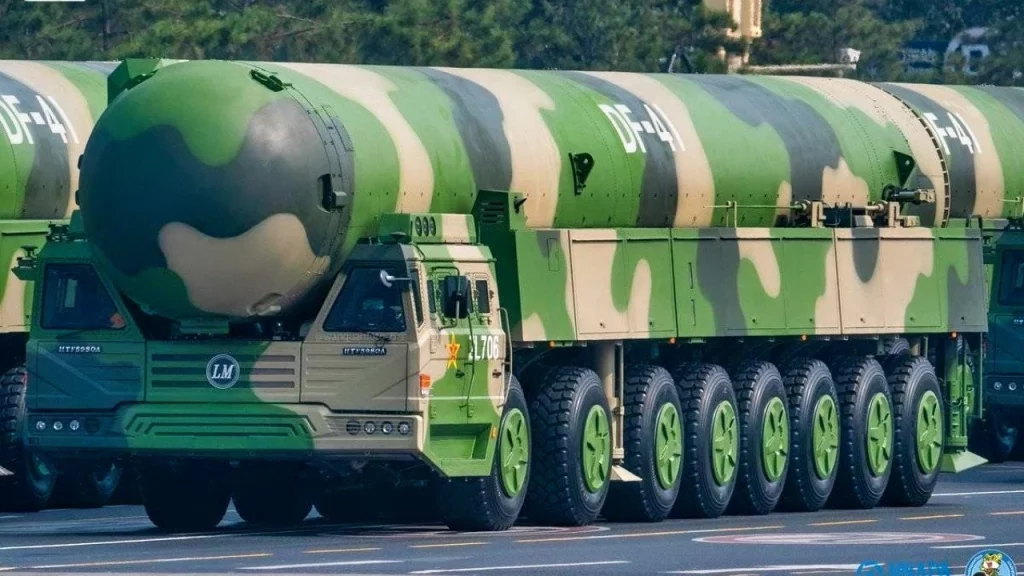
Key Features:
- Origin: China
- Class: Intercontinental Ballistic Missile (ICBM)
- Length: 20-22m
- Payload: 2,500 kg
- Warhead: up to 10 nuclear warheads, MIRV
- Range: 12,000-15,000 km
- Status: In service
3. Trident 2: Unmatched Submarine-launched Precision
The Trident 2, significant in the United States' naval defense, is a submarine-launched ballistic missile noted for its exceptional speed and precision. It can exceed speeds of Mach 24, or about 29,654 kilometers per hour, serving as a crucial element in the U.S. Navy's sea-based nuclear deterrent.
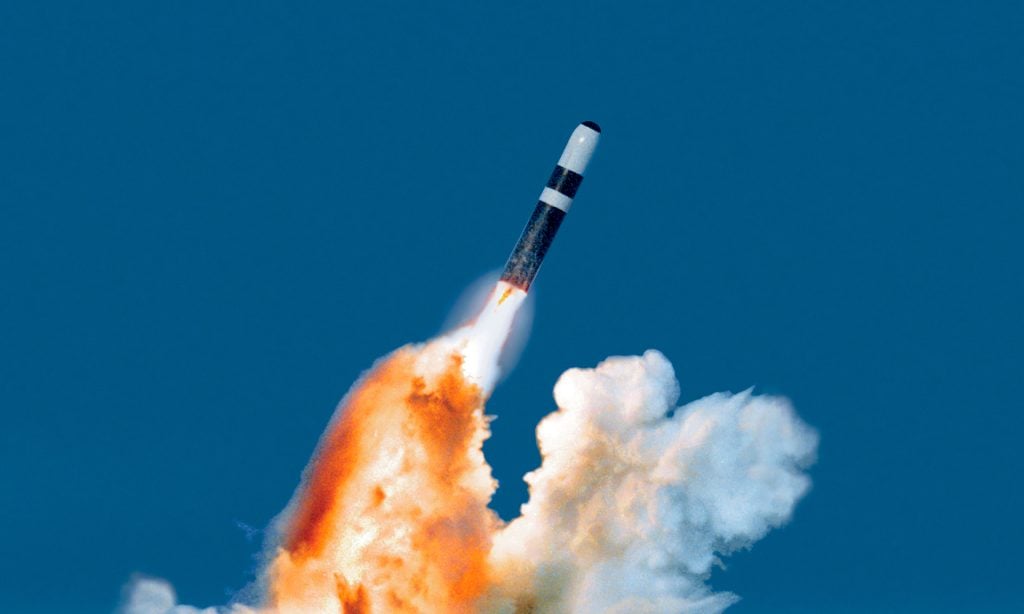
Key Features:
- Origin: United States
- Class: Submarine Launched Ballistic Missile (SLBM)
- Length: 13.42
- Payload: 2,800 kg
- Warhead: Up to 8 MIRV Mk 4 or Mk 5 warheads
- Range: Minimum 2,000 km, Maximum 12,000 km
- Status: In service (1990-present)
Also Read: 11 Best Sniper Rifles in the World
4. Minuteman 3: America's Intercontinental Ballistic Missile
The Minuteman 3, a key player in the United States' ballistic missile inventory, is renowned for its remarkable speed and range. Capable of reaching a maximum speed of Mach 23, or 28,200 kilometers per hour, the Minuteman 3 is essential to the U.S.'s intercontinental ballistic missile (ICBM) capabilities, offering swift and precise response potential.
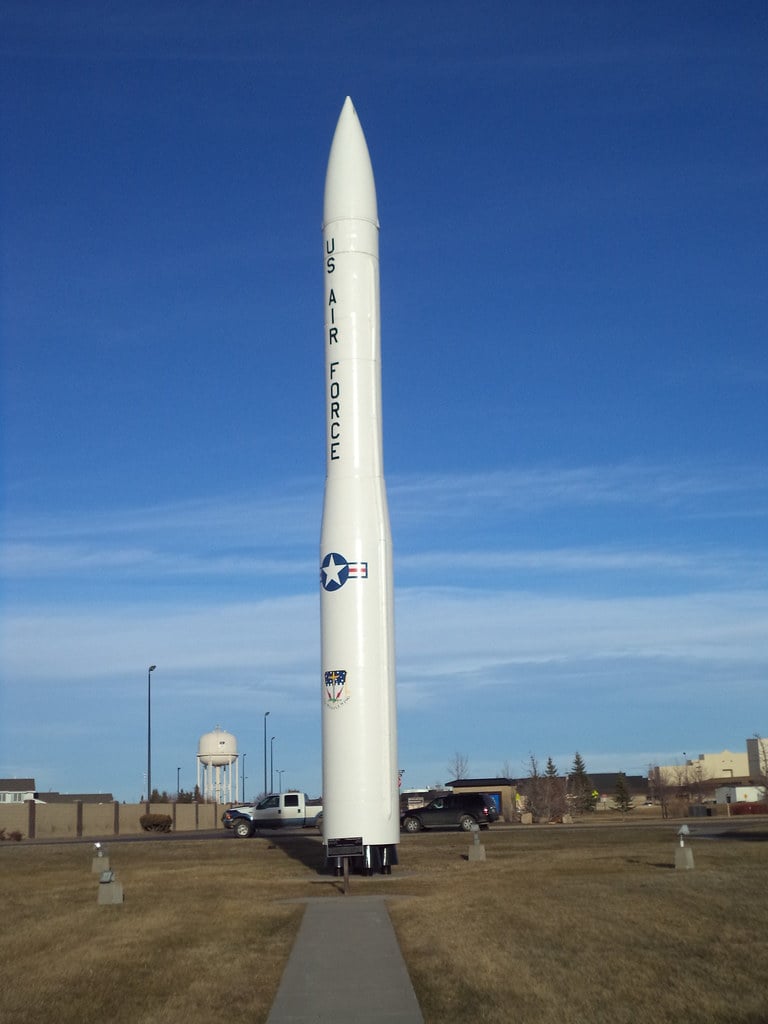
Key Features:
- Origin: United States
- Class: Intercontinental Ballistic Missile (ICBM)
- Length: 18.2m
- Payload: Up to 3 Mk 12A; 1 Mk 21 RV with penetration aids
- Warhead: W78 at 335 kT, W87 at 300 kT nuclear
- Range: 13,000 km
- Status: Operational
5. RS-28 Sarmat: Russia's Heavyweight Hypersonic Missile
The RS-28 Sarmat, also known as "Satan 2," stands as a significant advancement in Russia's hypersonic missile technology. Although its precise speed is classified, it is estimated to exceed Mach 20.4, or 25,500 kilometers per hour. Designed to carry diverse warheads and penetrate any current or future missile defense systems, the RS-28 Sarmat represents a formidable enhancement to Russia's military prowess. With a maximum range of up to 18,000km, RS-28 Sarmat boasts the longest range worldwide.
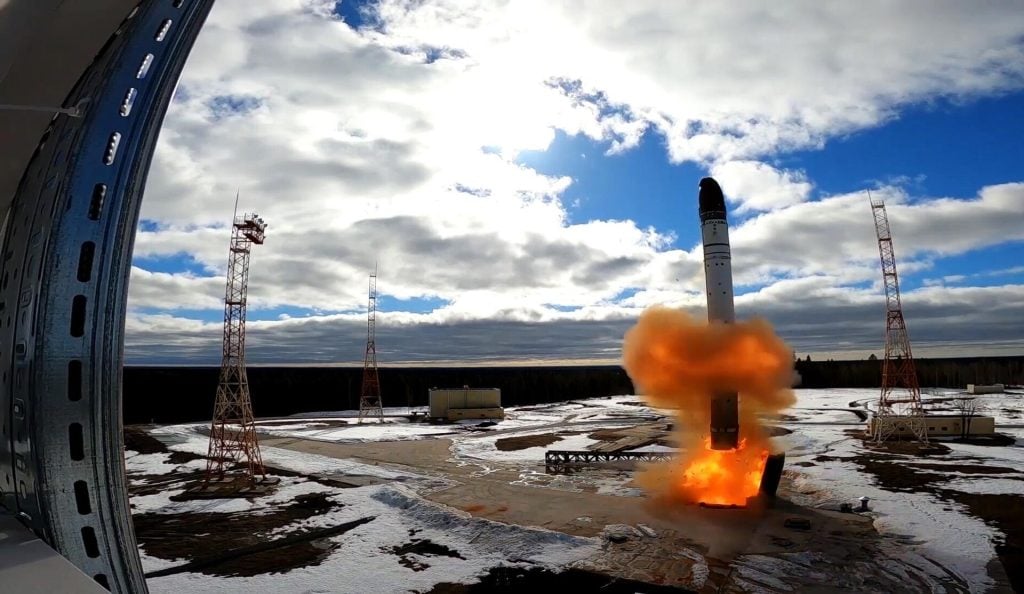
Key Features:
- Origin: Russia
- Class: Intercontinental Ballistic Missile (ICBM)
- Length: 35.3m
- Payload: 10,000 kg
- Warhead: Nuclear, MIRV or glide vehicles
- Range: 10,000-18,000 km
- Status: Operational
Comparative Table
| Rank | Missile Name | Origin | Class | Speed (Mach) | Speed (km/h) | Range (km) | Warhead | Status |
|---|---|---|---|---|---|---|---|---|
| 1 | Avangard | Russia | Hypersonic Glide Vehicle (HGV) | 27 | 32,200 | >6,000 | Nuclear (up to 2MT) | In service |
| 2 | DF-41 | China | Intercontinental Ballistic Missile (ICBM) | 25 | 30,600 | 12,000–15,000 | Up to 10 nuclear warheads (MIRV) | In service |
| 3 | Trident 2 | United States | Submarine Launched Ballistic Missile (SLBM) | 25 | 30,600 | 2,000–12,000 | Up to 8 MIRV Mk 4 or Mk 5 warheads | In service |
| 4 | Minuteman 3 | United States | Intercontinental Ballistic Missile (ICBM) | 23 | 28,200 | 13,000 | W78 (335 kT) or W87 (300 kT) nuclear | Operational |
| 5 | RS-28 Sarmat | Russia | Intercontinental Ballistic Missile (ICBM) | 20.4 | 25,500 | 10,000–18,000 | Nuclear (MIRV or glide vehicles) | Operational |
Strategic and Technological Insights
Speed and Maneuverability
Hypersonic missiles such as the Avangard, along with specific configurations of the RS-28 Sarmat, present significant interception challenges due to their high speeds and ability to alter course mid-flight. Although traditional ballistic missiles like the DF-41, Trident 2, and Minuteman 3 follow a predictable trajectory, their hypersonic speeds reduce the time for defensive actions.
Strategic Deterrence
The primary purpose of these missiles is nuclear deterrence, ensuring that nations can retaliate against attacks even if their primary forces are compromised. The Trident 2's submarine deployment offers a concealed and enduring launch platform, while the DF-41's MIRV capability allows for multiple simultaneous strikes, enhancing deterrence.
Technological Advancements
The emergence of hypersonic glide vehicles (HGVs) like the Avangard marks a substantial advancement in missile technology. Unlike conventional ICBMs, HGVs can maneuver at high speeds, increasing unpredictability. The inclusion of sophisticated guidance systems and solid-fuel propulsion in missiles like the DF-41 enhances their reliability and rapid deployment potential.
Global Security Implications
The spread of hypersonic and high-speed ballistic missiles poses global stability concerns. Their capability to strike with minimal warning could escalate conflicts if not moderated by effective arms control agreements. The presence of these missiles in the arsenals of Russia, China, and the United States highlights the necessity for diplomatic endeavors to manage their deployment and avert an arms race.
Additional Considerations
For various reasons, while the top five missiles lead in speed, others like India's Agni-V (Mach 24, 29,400 km/h) are notable but did not rank due to slightly lower speeds or less consistent reporting. New missiles such as the BrahMos-II (Mach 7–8, in development) show promise but remain non-operational as of 2025. The U.S. continues to develop hypersonic weapons, but as of 2023, these were still in testing phases, with no operational systems surpassing the Trident 2 or Minuteman 3 in speed by 2025.
Conclusion
In 2025, the top five missiles Avangard, DF-41, Trident 2, Minuteman 3, and RS-28 Sarmat embody the pinnacle of military technology, combining extreme speed, vast range, and substantial payloads. These missiles highlight the strategic priorities of Russia, China, and the United States in sustaining strong deterrence capabilities. As missile technology progresses, international collaboration and arms control will be vital in ensuring global stability in the presence of these formidable weapons.



















